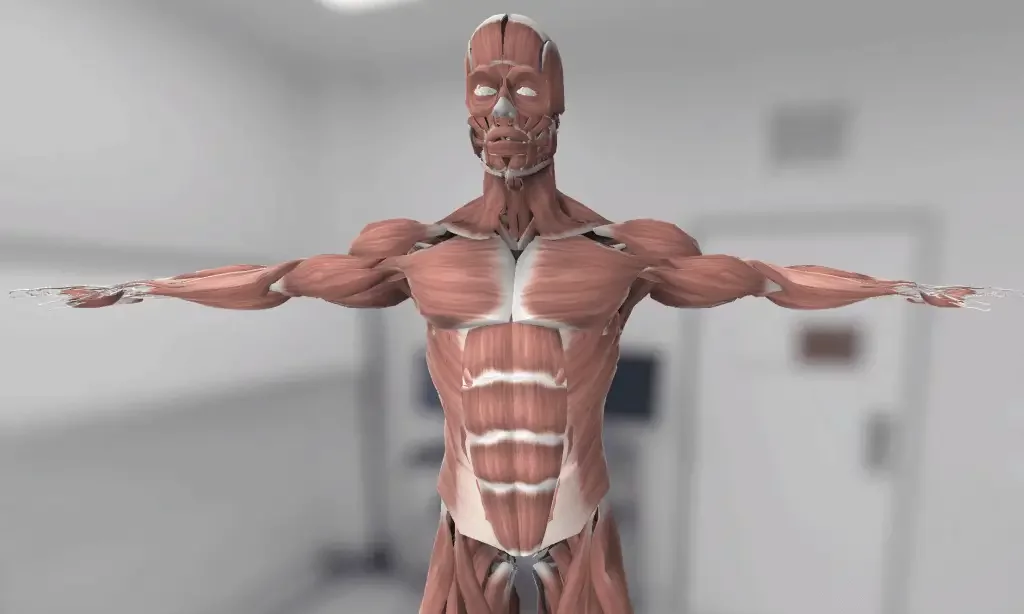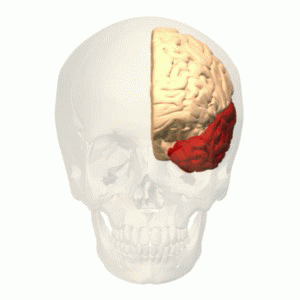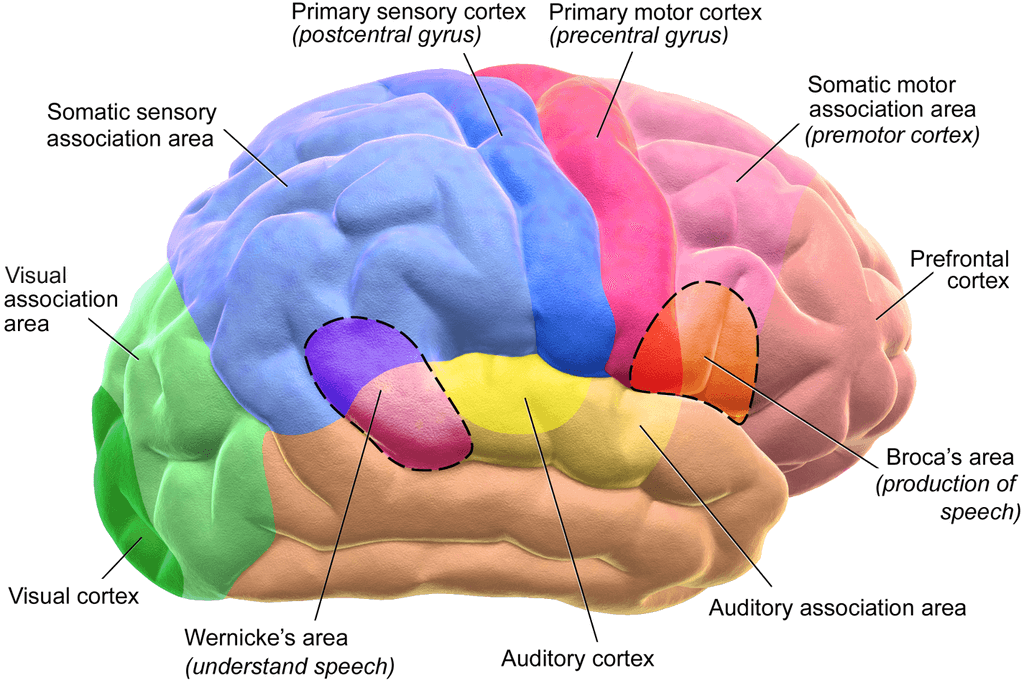3D Anatomy Model
Add another dimension to your learning with fully-interactive educational male and female anatomical models.
Learning about the human anatomy has never been more fun!
Purchase
The temporal lobe of the brain is often referred to as the neocortex, and is the second largest of the brain lobes. As per other brain regions, the temporal lobe plays a critical role in our cognitive functions; therefore, in the next paragraph, we start by answering some common questions about this brain region.
Where is the temporal lobe located?
The temporal lobe is located at the bottom of the brain, behind the ears and the temples from which it gets the name. Each right temporal lobe and left temporal lobe interacts above with the parietal lobes, frontally with the frontal lobes, and posteriorly with the occipital lobes.
What are the characteristic features of the temporal lobe?
Three main gyri, or folds, are observed in the temporal lobe: a superior temporal gyrus, a medial temporal lobe, and an inferior temporal gyrus. The sulcus separating the superior temporal gyrus and the medial temporal gyrus is known as the superior temporal sulcus and has a pivotal role in social cognition.
What are the main functions of the temporal lobe?
The main temporal lobe function is around visual and auditory processing. This brain region aids in processing auditory information, understanding language, learning verbal information, integrating and retaining visual memories of people or events from the past (also known as episodic memory), performing spatial reasoning, and processing emotions. The temporal lobe also helps in processing pain stimuli and understanding language. It interacts with all the regions of the brain.
What main structures are comprised within the temporal lobe?
The temporal lobe houses the limbic system, which includes the hippocampus and the amygdala. The hippocampus is involved in learning and memory by processing and retaining verbal and visual content, and the amygdala is responsible for the processing of emotional behaviors such as the “fight or flight” response.
What are the effects of temporal lobe damage?
Temporal lobe excision or severe temporal lobe seizures have serious effects on patients and their bodily functions because most human activities rely on memory, emotions, and sensory input. Severe damage to a person’s temporal lobe leads to impaired memory skills, severe difficulties in speech perception and language comprehension (receptive aphasia), visual perception, object recognition, auditory hallucinations, poor impulse control, and various issues of personality and sexual behavior.

The temporal lobe forms the cerebral cortex in conjunction with the occipital lobe, the parietal lobe, and the frontal lobe. It is located mainly in the middle cranial fossa, a space located close to the skull base. It is in front of the occipital lobe and behind the frontal lobe. The temporal lobe subdivides further into the superior temporal lobe, the middle temporal lobe, and the inferior temporal lobe. It houses several critical brain structures including the hippocampus and the amygdala. It is the second-largest lobe that makes up the cerebral cortex and it interacts with all the regions of the brain. The temporal lobe helps in processing input including auditory and pain stimuli. This lobe is involved in a number of cognitive functions: it helps in retaining memory, processing emotions, and understanding language.
The temporal lobe is composed of White Matter. It consists of the following parts:
The temporal lobe contains some important structures that help in it’s function i.e limbic area, Broca’s area, and Wernicke’s area.
It is also known as the paleomammalian cortex. It has a complex set of structures; the hypothalamus, amygdala, and hippocampus lie beneath the medial temporal lobe.
The hypothalamus is located below the thalamus and contains two horns. It is responsible for homeostasis. It regulates the function of the autonomic nervous system and is responsible for transmitting short-term memory into long-term memory.
The amygdala is an almond-shaped set of neurons present on each side of the thalamus. Other structures include the cingulate gyrus, basal ganglia, prefrontal cortex, and basal tegmental area.
Broca’s area is responsible for one’s ability to speak. It aids communication with the Wernicke’s area.
This area helps in the comprehension of speech.

The temporal lobe helps in the processing of auditory stimuli. It perceives, remembers, and assigns meaning to the sound. It is responsible for selective hearing that helps out filtering unnecessary sounds. It produces long-term memories. It has a ventral lobe that helps in recognizing objects and understanding body language. It helps in the production of speech. The temporal lobe has an auditory cortex which helps in understanding, hearing, and meaning of the speech. Without the temporal lobe, one cannot recognize objects and language. It helps in maintaining homeostasis and other autonomic functions i.e hunger, thirst, anxiety, and arousal.
The temporal lobe receives its supply from the internal carotid artery system and vertebrobasilar artery.
The venous supply consisted of the middle cerebral vein and posterior choroidal vein.
It is one of the common forms of partial epilepsy in adults. It is known as a focal seizure because it involves only the temporal lobe. In temporal lobe epilepsy, uncontrolled electrical activity in the temporal lobe leads to seizures. There are two types of temporal lobe epilepsy: medial temporal lobe epilepsy and lateral temporal lobe epilepsy. Middle temporal lobe epilepsy involves the internal structures while lateral temporal lobe epilepsy involves the outer part of the brain.
It is described as a disorder of speech or language. Damage to Wernicke’s area can cause aphasia. It commonly occurs in those who have had a stroke.
Disturbance of visual and auditory input selection leads to impairment of short-term memory. The person is unable to convert short-term memory into long-term memory. The person is unable to recognize faces and objects.
Discriminating speech and impaired sound is associated with a lesion in the left temporal gyrus.
Loss of autobiographical memory leads to a change in personality
Inability to coordinate actions because of damage to the temporal lobe.
The person suffers from difficulty in reading and sound recognition due to reduced activity in their temporal lobes.
Temporal lobe lesions can sometimes lead to visual field defects due to the loss of important structures that communicate with the occipital lobe.
These involve changes in thirst, hunger, appetite, arousal, and sexual desire. They can affect brain function and overall health.
The content shared on the Health Literacy Hub website is provided for informational purposes only and it is not intended to replace advice, diagnosis, or treatment offered by qualified medical professionals in your State or Country. Readers are encouraged to confirm the information provided with other sources and to seek the advice of a qualified medical practitioner with any question they may have regarding their health. The Health Literacy Hub is not liable for any direct or indirect consequence arising from the application of the material provided.
